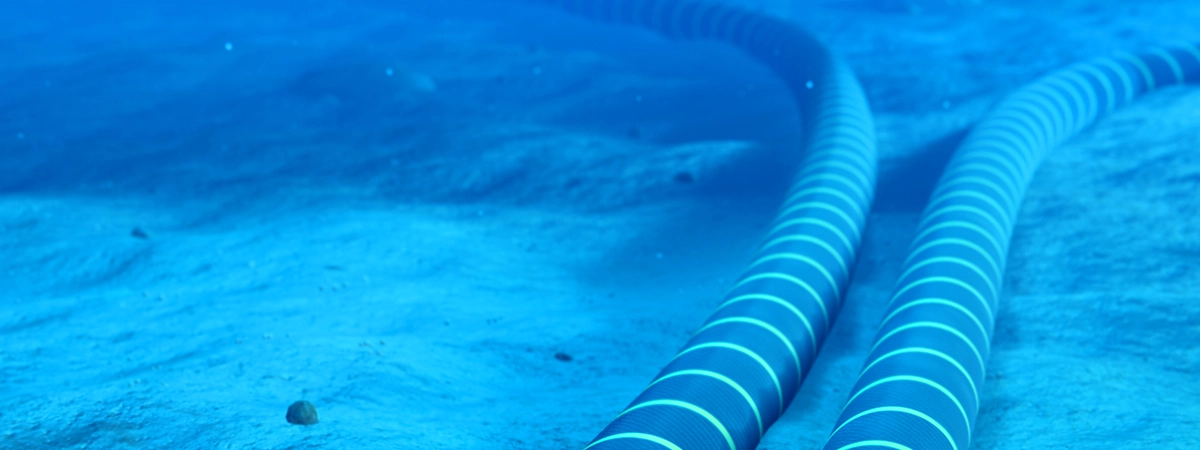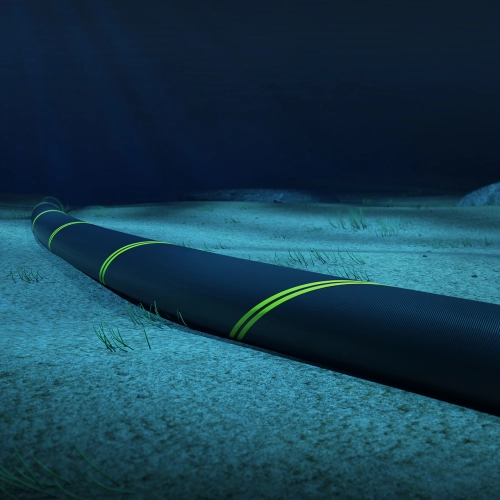海底光缆网络
最先进的海底电缆网络解决方案
海底光缆是铺设在海底或其他水体下的通信光缆。海底光缆网络是一个集成的光缆系统,这些光缆共同提供从一个陆地位置到另一个陆地位置的数据传输。这个网络包括光缆本身,以及用于实现这种大规模通信的其他硬件组件和基础设施。尽管卫星通信发展迅速,但超过 95% 的国际数据传输仍通过海底光缆网络进行。
这些光缆的尺寸因中心纤芯的光纤数量、海洋环境(沙或岩石)以及水深不同而不同。它们采用特殊方法建造,可防止用于传输数据的物理层光纤进水和损坏。光缆内层的光纤被固定在一根小的塑料/尼龙管中,管中填充了一种保护/润滑凝胶,该管通常被多条镀锌钢绞线环绕,并包裹在铜管或铝管中。然后用一层聚碳酸酯、另一层铝制防水层来进一步保护这一管道,并使用钢丝绞线来增加重量和机械强度,然后外层用聚酯薄膜和聚乙烯进行额外的防水。可以采用多种不同的方式来建造光缆,具体取决于网络结构、规划的用途、部署深度和环境等。
海底光缆测试工具
海底电缆网络的建设、激活和维护面临着独特的挑战,这些挑战与可达性、长距离和持续暴露于自然环境有关。在整个网络生命周期中,使用正确的测试和监测工具至关重要。查看所有海底光缆测试工具。
建造
在建造过程中,端面检测可以检测到污垢颗粒或其他物理缺陷,这些缺陷的影响可能会降低网络性能或使其中断(并产生不良的测试结果)。用于物理层光纤验证的最重要工具可能是 OTDR。可以针对长途线路湿设备 OTDR 以及通用双向干设备 OTDR 使用专用类型。
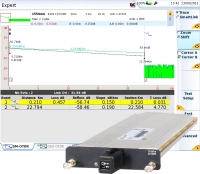
在海底网络建设的光缆部署过程中,必须测量和控制的另一个参数是实际光纤上施加的应变量,对于海底光纤等级 (IEC 60794-3-20),此值必须小于 0.34%,否则会缩短光纤的寿命。可以使用便携式布里渊 OTDR 进行应变测量。为了建立光学色散基准并评估是否需要色散补偿,光学色散工具对于网络的特征分析也至关重要。
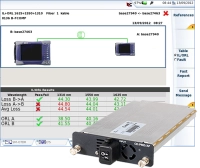
激活
业务激活需要光功率测量和频谱分析工具,以及数据网络设备测试。为了对光功率进行量化,加强型光功率计是必不可少的工具。在此阶段中,还必须使用用于测量光信噪比 (OSNR) 的高质量光谱分析仪 (OSA) 以及用于分析延迟、吞吐量、抖动和帧丢失/比特误码率的网络测试仪来验证和认证网络性能。
监测和维护
监控和维护是使重要的光缆网络保持最佳运行状态的关键。为了评估光纤的物理运行状况,一个有效的光纤网络监控系统(例如 ONMSi)可以提供实时的故障、退化和安全问题监控。
光纤链路监测是一项基本的持续功能。ONMSi 可用于检测光纤退化,而诸多光纤监控技术可用于应对与故障有关的独特挑战。例如,为了检测海底电缆固有的应变、温度和其他参数的波动,光纤传感工具发挥了关键作用。此外,业务性能监控是主动识别数据问题(例如延迟、吞吐量、抖动和帧丢失/比特误码率)的关键,并且,为了向客户证明 SLA 遵从性,必须进行业务性能监控。
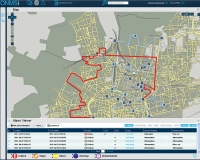
ONMSi

业务性能监控
海底网络架构
对海底电缆系统的总体架构进行定义的最佳方式可能是通过从头到尾组成该系统的各个元件来定义。在通过数千英里的不可预测的海洋中保持数据完整性方面,这些组件中的每一个都扮演着重要的角色。
湿设备是一个术语,用来描述位于水下的所有网络元件。这种湿设备的边界是海滩上电缆入水和出水的两个检修孔。湿设备的分立部件包括光缆、均衡器、分支装置以及海底中继器。
与之相反,众所周知的干设备则由海滩检修孔和电缆登陆站之间的陆地段海底电缆网络段组成。这包括供电装置 (PFE)、海底线路终端和陆地电缆段。
海底电缆系统在登陆站与地面网络连接,回传系统提供到干设备的连接。登陆站是头端和数据中心所在的位置。这些登陆站点通常位于海上交通量较低、水流温和、海底坡度平缓的地区,这样湿设备光缆就可以更容易地埋设/登陆,以便连接到干设备。
顾名思义,脐带缆提供了海底和陆基位置之间的生命线。这种类型的海底电缆可用于从地面位置或浮动位置与海底电缆一起向海底电缆网络供电。
由于衰减的原因,光信号的范围是有限的。解决这一问题的一种方法是在电缆沿线以不连续的间隔使用中继器。对于海底网络,中继器由干设备的供电装置 (PFE) 串联供电。为了维持正确的光功率电平,并确保数据信号有足够的光信噪比 (OSNR),可以使用电力驱动的光放大器来中继这些信号。海底链路中使用的放大器大多是掺铒光纤放大器 (EDFA),这种放大器具有固有的低噪声和高输出功率 (> 15 dBm)。
选择采用哪种网络设计通常与是否使用中继器有关,如果使用中继器,则与使用多少中继器有关。设计时考虑的另一个因素是光缆铺设是否会在多个方向上分支,或者只是点对点铺设。无中继光缆系统有范围有限的固有局限性,400 公里是其近似极限。另一方面,这些无中继系统由于复杂性较低,部署和维护成本较低,因为不需要中继器,所以不需要供电。
海底电缆测试 – 要测量和认证的内容
这些网络的复杂性使得对湿设备、干设备和登陆站的所有部分(包括这些元件之间的接口)进行测试和认证变得极为重要。对于湿设备,OTDR 测试对于测量整个长度的衰减至关重要。
对于中继系统,这包括通过在线放大器进行的测量。对于非中继系统,可能需要远程 OTDR。对湿设备进行认证所需进行的其他测试包括色散 (CD) 和偏振模色散 (PMD)。
干设备也必须经过测试和认证,包括对到湿设备的无误差数据传输的验证。应对 SLTE 修补和检修孔熔接的完整性进行验证。通过干设备连接进行的光谱分析 (OSA) 是另一个关键测试点。还必须连同光纤基干线路一起检查登陆站的数据网络元件。与纯粹的陆基网络一样,延迟、吞吐量、抖动和帧丢失是评估性能的潜在测试指标。还应该评估与保护开关业务中断相关的时间。
详细了解海底光缆网络:
现在有如此多的全球数据通过这些网络传输,它们对全球通信、商务和安全的重要性怎么强调都不过分。这可以追溯到这些网络的早期历史,当时英国对此行业的统治地位使其占据了军事、商业和政治上的优势。
假设您面向客户的网站由于网络性能差而运行缓慢。潜在客户会对网站失去耐心,决定不购买您的产品或服务。或者,也许您想进入另一个市场。如果您的网络不能满足需求,这样的转变就会发生,您的努力就会白费。
如今,各国政府对海底光缆的所有权已经让位于由多个电信运营商组成的财团,这些电信运营商负责建造、监测和维护这些庞大的网络。近年来,许多互联网内容提供商 (ICP) 和数据中心所有者及运营商也加入了海底电缆所有权的争夺,以确保自己在这一宝贵商品上的利益。
海底电缆的使用范围是没有界限的。由于国际互联网和电话通信如此依赖这些网络,几乎所有的企业、政府或个人只要拥有一台电脑,每天都要使用海底电缆。为了满足这一不断增长的需求,海底互联网光缆带宽不断增加。例如,从维吉尼亚到西班牙的 6600 公里的 MAREA 光缆能够传输 160 太比特每秒 (Tbps) 的数据。
1850 年,英国和法国之间建成了第一条海底电报线缆。由于现代绝缘材料当时还不存在,人们就用天然橡胶和古塔胶等物质来保护铜线,但往往不成功。大多数早期的网络都为英国人所有,而那个时代可用的科学技术严重限制了带宽。
电话转发器技术在 20 世纪 50 年代得到了充分的发展,使第一条跨大西洋海底电话电缆成为可能。这些服务的普及和广泛采用催生了额外的放大器和中继器的发展,以提高这些早期网络的效能。
互联网光缆始于 20 世纪 80 年代,它用 TAT-8 取代了传统的同轴海底电话电缆网络,这是横跨大西洋铺设的第一条海底电缆。它安装于 1988 年。自那时起,光放大器、材料和多路复用能力不断发展,使今天的光纤海底电缆网络成为全球通信的首选。
尽管在建设和实际的海底网络建设和部署方面取得了这些进步,但它们仍然是脆弱的。 捕鱼设备、锚和不断变化的洋流带来无处不在的危险,从第一个海底电缆网络直至今天一直存在,并可能降低海底网络的数据容量,甚至使其完全不起作用。
海底电缆不是一个新概念。事实上,它是在 1858 年首次实施的,通过一条深埋在海面下的电报电缆连接纽芬兰和爱尔兰。虽然这在当时是革命性的,但第一个发送的非测试电文是一封 509 个字母的电文,花了 17 小时 40 分钟跨越大西洋投递。然而,自那时以来,所使用的技术和技巧发生了巨大的变化(和改进),变得更好了。
什么是海底电缆?
海底电缆是一种铺设在海洋表面下的通信电缆,提供从一个陆地位置到另一个陆地位置的数据传输。电缆的大小各不相同,其装备可以阻挡海洋中可能存在的任何环境因素,并能够承受它们所处水深的压力。
历史上,海底电缆需要大约四年的时间才能安装完毕,只用了一个月就会因恶劣的条件而损坏。海底电缆最初是由电报线路构成的,后来发展到电话和同轴线路,而所有现代海底电缆都使用光纤。
如今,光纤技术使用激光通过细玻璃纤维(光纤)将快速波发送到电缆的另一端。细丝(光纤)由绝缘层保护,因为它们像人的头发一样细。铺设在浅水中的电缆比那些位于海洋深处的电缆更坚固、更粗,因为它们必须承受更恶劣的条件。
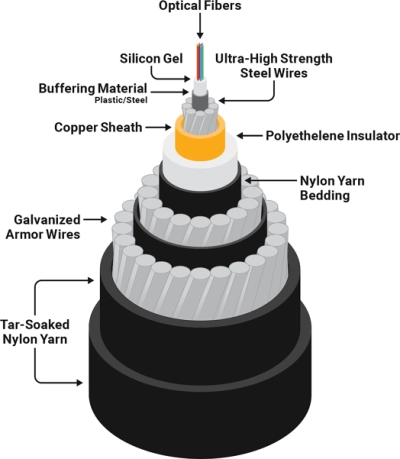
海底电缆的未来
有三种主要方式可以在大跨度的陆地上传输数据信号(电话电缆、同轴电缆和光纤电缆),它们或者通过空气或者通过海洋发送数据。99% 的互联网数据来自海底电缆,380 多条活跃电缆位于海底,对海底电缆的需求显而易见。
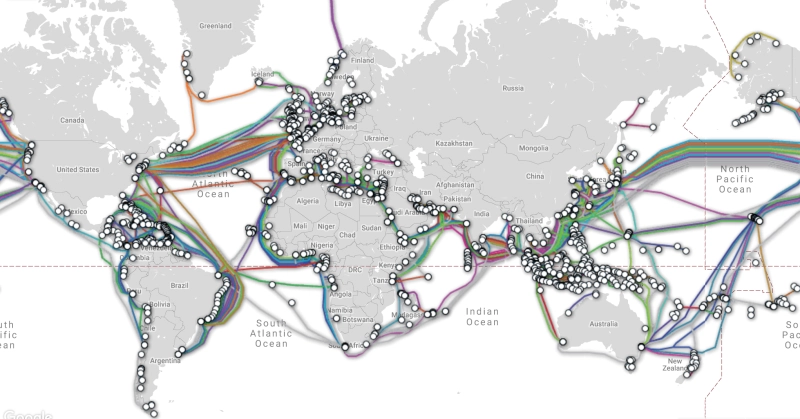
对互联网和云计算的需求正在扩大,对更快、更可靠的服务的需求也随之而来。事实上,对全球带宽的需求正以每年高达 40% 的速度增长,分析师预测,到 2020 年,光缆的安装量将达到 200 万公里。预计到 2021 年,全球将有 53.7% 的人口能够访问互联网,相当于约 43 亿人。随着海底互联网电缆带宽的不断增加,海底网络是满足这种需求的最可靠和最具成本效益的解决方案。因此,横跨弗吉尼亚和西班牙之间的 6600 公里长的 MAREA 电缆能够每秒传输 160 太比特的数据。
虽然海底电缆是一个建设缓慢而昂贵的项目,但它仍然是比卫星更便宜、更快的替代方案。尽管这两种方案仍然容易受到损害和损坏,但海底电缆受到威胁性损坏的可能性要小得多。一根电缆每秒可以传输数十 TB 的信息,而卫星每秒只能传输大约 1 TB 的信息。随着新的相位调制技术和海底设备的最新进展,容量已增加到 8000%,确保海底网络为数据和互联网流量的增长需求做好充分准备。
VIAVI 测试和监控工具系列专为处理海底电缆网络和海底电缆服务的所有方面而设计,从建造阶段一直到激活和监控。由于电缆所处的环境和条件,海底网络通常会构成独特的障碍,这就是为什么配备适当的仪器是至关重要的。因此,典型海底电缆网络的整个架构被划分为多个要素(湿设备、干设备、登陆站、脐带电缆、长度/距离和中继器/放大器)。每个元素在保护和传输整个网络系统中的数据方面都起着至关重要的作用。使用 VIAVI 的端到端解决方案保护和监控海底网络。
对全球高速电信的依赖比以往任何时候都要高。从紧急的金融交易到无休止的视频直播,海底电缆支持着我们现代生活方式的许多方面(我们可能没有意识到这些),使其成为全球经济的支柱之一。事实上,根据 StableSeas 2019 年的一份报告,商用海底电缆承载了全球约 97% 的互联网和电信数据。
据 TeleGeography 报道,截至 2020 年,全球有超过 120 万公里的海底电缆投入使用。这些电缆承载着超过 10 万亿美元的金融交易,以及以每小时数百万英里的惊人速度在世界各地传输的大量网络数据和互联网流量。包括国际银行业、商业贸易、国防数据和日常互联网使用在内的各个部门都依赖于这一关键基础设施。令人担忧的是,这一至关重要的全球通信的完整性正受到意外和蓄意破坏的严重威胁。
随着 5G 和其他技术将我们的社会转变为高度集成的网络,保护我们的数字基础设施(如海底光缆)变得比以往任何时候都更加重要。让我们更深入地了解海底光缆面临的挑战以及如何克服这些挑战。
事故多发环境
海底电缆的设计寿命约为 25 年。然而,当它们在经济上开始变得过时时,它们通常会提前停用。经过这么长时间,环境会对电缆造成损害。不断变化的潮汐、侵蚀、风暴和海水入侵都是数据流的潜在干扰因素。事实上,由于海流在岩石表面刮擦电缆,约有 6% 的电缆因磨损而损坏。这些来自环境的损害通常会导致各种问题,从轻微的运行中断和速度降低到完全失去连接。
拖锚和捕鱼活动
毫不奇怪,更大、更重要的物理威胁是人为的,来自渔船和拖锚造成的事故。据 TeleGeography 报道,这种意外损坏约占所有海底电缆故障的 60% 或三分之二。当渔船和大型船只在指定的锚泊区外拖锚,从而撞击海底电缆时,就会发生这种事故。最近的故障记录表明,商船在短距离航行时,有时会忘记牢牢地系好锚。
鲨鱼撕咬带来的威胁
由于鲨鱼撕咬造成的电缆故障非常罕见,这可能是媒体引用的最大的神话。虽然在过去,一些好奇的鱼类和鲨鱼确实咬过一些电缆并造成了破坏,但总的来说,它们不是主要的威胁。根据 2009 年联合国环境规划署的报告,梭鱼和鲨鱼过去都曾被发现导致电缆故障。它们的咬痕往往会穿透电缆绝缘层,从而使海水损害电力导体。
极端地震和天气事件造成的损坏
自然灾害,如泥石流、台风、海啸和地震,也是海底光纤的主要威胁。在亚洲的水下网络中,大量电缆集中在一个主要地震带的中间,这在过去导致了许多灾难,其中自然灾害切断了大约一半先前存在的跨太平洋电缆。不幸的是,被地震损坏的海底电缆非常普遍,尤其是在像日本和台湾这样的地震多发国家/地区。当海底电缆在大地震或其他自然灾害后被切断时,可能会导致互联网接入和通信流量中断,这可能会耗费金钱和时间。
解决方案
为了克服对海底电缆的破坏,过去五年发展的海底网络在设计时考虑到了增强的物理安全性。为了保护光缆免受水环境危害,海底电缆通常包裹有多层保护涂层。为了进一步提高其保护性能,电缆被包裹在一个从海岸线延伸数英里的保护管中。在某些情况下,运营商可能会使用放置在电缆外壳中继器内部的自动化技术。这种技术可以帮助避免将损坏的电缆从海里拉出来修复,然后再将其重新部署到水下的成本和时间。
为了应对极端的地震和天气事件,东南亚-日本电缆 (SJC) 财团设计了一种水下光缆部署路径,有意避开北亚的地震多发区。同样,NTT 通信公司(东京)的亚洲海底电缆快线也采取了类似的做法。他们的新线路设计成绕过损坏区域,而不是从两端选择最短、最直的线路。这种模式旨在绕过高风险地带,避免地震和台风造成的破坏。
结语
最终,海底电缆有助于保持全球经济的良好运转,并将世界各地的人们联系在一起。保护这些关键基础设施不受任何损害是一个国家/地区至关重要的国家利益。其中一种方法是通过海底电缆服务进行定期维修和保养。这样做将确保电缆的完整性不会受到任何破坏性损害的威胁。通过使用监控系统实时监控光纤网络,并在出现问题时发出声音警报,可以实现降低风险的步骤。
考虑到保护和监控海底光缆的重要性,电信公司必须继续努力克服海底光缆维护的挑战。
The wet plant is a term used to describe all the network elements that reside underwater. The boundaries for this wet plant are the two beach manholes where the cable either enters or exits the water. Discrete parts of the wet plant include the cable, equalizers, branching units, and submarine repeaters.
Conversely, the dry plant, as it is known, consists of the subsea cable network segment on land between the beach manhole and the cable landing station. This includes power feeding equipment (PFE), submarine line terminals, and land cable segments.
The subsea cable system is connected to the terrestrial network at the landing station, with the backhaul system providing a connection to the dry plant. The landing station is where the head end and data center is found. These landing sites are usually located in areas with low levels of marine traffic, mild currents, and gently sloping sea floors so that the wet plant cables can be more easily buried/landed for linking to the dry plant.
As the name suggests, umbilical cables provide a lifeline between the seafloor and a land-based position. This type of ocean cable may be used to supply power to a subsea cable network from a ground position or floating position along with the cables in the ocean run.
Over one million kilometers (km) of submarine ocean cables currently transverse the world's oceans. A submarine cable map accurately represents the placement of all submarine cables.
The range of optical signals is limited due to attenuation. One way to overcome this is through the use of repeaters at discrete intervals over the cable run. For subsea networks, the repeaters are powered in series by the power feeding equipment (PFE) of the dry plant. To maintain the correct optical power levels and ensure adequate Optical Signal-to-Noise Ratio (OSNR) for data signals that electrically powered optical amplifiers that can be used to repeat those signals. Most of the amplifiers utilized in submarine links are Erbium-Doped Fiber Amplifiers (EDFA) which have inherently low noise and high (> 15 dBm) output power.
Design choices made for these networks typically relate to whether repeaters will be used, and if so, how many. Another design consideration is whether or not the cable runs will branch in multiple directions or simply travel from point to point. Unrepeated cable systems have the inherent drawback of limited range, with 400km being the approximate limit. On the other hand, these unrepeated systems can be cheaper to deploy and maintain due to their lower complexity as there are no repeaters required and hence no powering.
Subsea Cable Testing – What to Measure and Certify
The complexity of these networks makes it extremely important to test and certify all segments of the wet plant, dry plant, and landing station, including the interfaces between these elements. For the wet plant, OTDR testing is vital to measure attenuation across the entire length of the cable.
For repeated systems, this includes measurement through the in-line amplifiers. For non-repeated systems, long-range OTDR may be required. Other testing required to certify the wet plant includes chromatic dispersion (CD) and polarization mode dispersion (PMD).
The dry plant must also be tested and certified, including verification of error-free data transmission to the wet plant. The integrity of SLTE patching and the manhole splice should be verified. Optical Spectrum Analysis (OSA) through the dry plant connection is another critical test point. The data networking elements of the landing station must also be vetted, along with the fiber backhaul. As with a purely land-based network, latency, throughput, jitter, and frame loss are potential test metrics to assess performance. The time associated with protection switch service disruptions should also be evaluated.
Learn More About Submarine Cable Networks:
With so much worldwide data now traveling through these networks, their importance to global communication, commerce, and security cannot be overstated. This can be traced to the earliest history of these networks when British domination of this industry engendered military, commercial, and political advantages.
Suppose your customer-facing website is slow because of poor network performance. Potential customers lose patience with the site and decide not to buy your products or services. Or, perhaps you're looking to move into a different market. If your network can't handle the demands, such a shift would place on it, your efforts will be in vain.
Submarine cable ownership today by individual governments has given way to consortiums of multiple telecom carriers who build, monitor, and maintain these huge networks. In recent years, many Internet Content Providers (ICP) and data center owner and operators have also entered the fray of submarine cable ownership to ensure their own interests in this valued commodity.
The range of uses for undersea cable knows no boundaries. With international internet and phone communication relying so heavily on these networks, almost any business, government, or individual who owns a computer is a daily user. To meet this growing demand, submarine internet cable bandwidth continues to increase. For example, the 6600 km MAREA cable from Virginia to Spain is capable of carrying 160 terabits per second (Tbps) of data.
In 1850, the first undersea telegraph cable was built between England and France. Since modern insulating materials did not yet exist, substances like India rubber and Gutta-percha were used to protect the copper wires, often unsuccessfully. Most early networks were owned by the British and the available science of that era severely limited bandwidth.
Telephone repeater technology evolved sufficiently by the 1950's to make the first transatlantic submarine phone cables possible. The popularity and widespread adoption of these services spawned additional amplifier and repeater development to increase the efficacy of these early networks.
Originating in the 1980s, internet cabling has supplanted the legacy coaxial submarine phone cable networks with TAT-8, the first submarine optic cable laid across the Atlantic ocean. It was installed in 1988. Optical amplifiers, materials, and multiplexing capabilities have continued to evolve since that time making today's submarine cable networks the preferred option for worldwide communications.
Despite these advancements in construction and actual submarine network build and deployment, they are still vulnerable. The ever-present hazards presented by fishing equipment, anchors, and shifting currents have continued from the first submarine networks through the present day and can diminish the data capacity of a submarine network or even render it inoperative altogether.
Submarine cabling is not a new concept. In fact, it was first implemented in 1858, connecting Newfoundland and Ireland through a telegraph cable that was placed deep beneath the sea's surface. While this was revolutionary at the time, the first non-test message that was sent was a 509-letter message that took 17 hours and 40 minutes to be delivered across the Atlantic ocean. However, since those times, the technology and techniques used have drastically changed (and improved) for the better.
What are Submarine Cables?
A submarine cable is a communications cable that is laid beneath the ocean's surface that provides data transfer from one land-based location to another. Varying in size, the cables are equipped to withhold any environmental elements which may be present within the sea, as well as the depth of water in which they are situated.
Historically, submarine cables took approximately four years to install, lasting only one month before breaking down due to the harsh conditions. First constructed from a telegraph line, submarine cables have progressed to telephone and coaxial lines, with all modern submarine cabling using fiber optics.
Today, fiber-optic technology uses lasers that send rapid waves down through thin glass fibers (optical fibers) to the other end of the cable. The filaments (fibers) are protected by layers of insulation as they are as thin as a strand of human hair. The cables that are laid within shallow water are much stronger and thicker than those located deeper within the ocean as they have to withhold tougher conditions.

Future of Submarine Cabling
There are three main ways to transmit data signals across large spans of land (phone cable, coaxial cable, and fiber optic cables) which either send data through the air or through the sea. With 99% of internet data sourced from submarine cables and more than 380 active cables lying on the bottom of the ocean, the need for submarine cables is evident.

The demand for internet and cloud computing is expanding and the need for faster, more reliable service is here. In fact, the demand for global bandwidth is growing at up to 40% each year, with analysts predicting the installation of fiber optic cables to hit the 2 million kilometer range in 2020. It is expected that 53.7% of the world's population will have access to the Internet by 2021 which equates to an estimated 4.3 billion people. The submarine network is the most reliable and cost-effective solution in keeping up with such demand with submarine internet cable bandwidth continually increasing. As such, the 6600km MAREA cable, which spans between Virginia and Spain, is equipped to carry 160 terabits of data per second.
While submarine cabling is a slow and expensive project, it is still the cheaper and faster alternative to satellites. Although both options are still susceptible to vulnerability and damage, it is far less likely for subsea cables to suffer from threatening damage. A single cable can carry tens of terabytes of information per second where satellites fall short, being able to only carry approximately one terabyte per second. With new phase modulation techniques and the latest advancements in submarine equipment, the capacity has increased to 8000%, ensuring that submarine networks are well prepared for the heightened demand of data and internet traffic.
The range of VIAVI testing and monitoring tools are designed specifically to handle all aspects of the submarine cable network and subsea cable services, from the building stage right through to activation and monitoring. The submarine network typically poses unique obstacles due to the environment and conditions that the cables are situated within which is why it is critical to be equipped with the right instruments. As such, the entire architecture of a typical submarine cable network is divided into elements (wet plant, dry plant, landing station, umbilical cables, lengths/distances, and repeaters/amplifiers). Each element plays a crucial role in protecting and delivering the data throughout the network system. Protect and monitor the submarine network with end-to-end solutions from VIAVI.
Reliance on global high-speed telecommunications is higher than ever before. From urgent financial transactions to endless video live-streaming, undersea cables support numerous aspects of our modern lifestyle that we may not be aware of, making it one of the backbones of the global economy. In fact, commercial undersea cables carry about 97% of the world's internet and telecommunications data, according to a 2019 report by StableSeas.
As of 2020, there are over 1.2 million kilometers of submarine cables in service globally, TeleGeography reported. These cables carry over $10 trillion of financial transactions, as well as massive amounts of web data and internet traffic across the world at the incredible speed of millions of miles per hour. Various sectors, including the international banking industry, commercial trade, defense data, and daily internet usage, relies on this critical infrastructure. Concerningly, the integrity of this vital global communication is significantly at risk from accidental and deliberate damages.
As 5G and other technologies transform our societies into highly integrated networks, protecting our digital infrastructure - such as undersea fiber-optic cables - becomes more important than ever. Let's dive deeper to understand the challenges facing submarine fiber-optic cables and how to overcome them.
Accident-Prone Environment
Submarine cables are engineered to sustain around 25-years of shelf life. However they are often retired earlier than that when they start to become economically obsolete. Over that long period of time, the environment takes its toll on the cable. Shifting tides, erosions, storms, and saltwater intrusion are all potential disruptors of data flow. As a matter of fact, around 6% of cables are damaged through abrasion as the current scrapes cables against rocky surfaces. These damages coming from the environment often cause a variety of issues, starting from minor outages and lowered speeds to a full loss of connectivity.
Anchor Dragging and Fishing Activity
Not surprisingly, the larger and more significant physical threats are man-made, coming from accidents due to fishing vessels and dragged anchors. This type of accidental damage make-up about 60% or two-thirds of all submarine cable faults, TeleGeography reported. This accident occurs when fishing boats and large ships are dragging their anchors outside the designated anchoring areas, thus hitting subsea cables. Recent fault records have indicated that merchant ships sometimes forget to fasten their anchors securely when traveling during short passages.
Threats from Shark Bites
Cable faults due to shark bites are exceedingly rare, and it is perhaps the biggest myth cited in the press. While it is true that in the past, some curious fish and sharks have bitten a few cables and caused damage, in general, they are not a major threat. Both barracuda and sharks have been found to cause cable failure in the past, as reported by the 2009 UN Environmental Program report. Their bites tend to penetrate the cable insulation, thus allowing seawater to compromise the power conductor.
Damages by Extreme Seismic & Weather Events
Natural disasters - such as mudslides, typhoons, tsunamis, and earthquakes - are also major threats to undersea fiber. In Asia's underwater network, a large number of cables is concentrated in the middle of a major seismic belt, which resulted in many catastrophes in the past where natural disasters severed about half of the pre-existing trans-pacific cables. Quake-damaged undersea cables are, unfortunately, quite common, especially in earthquake-prone countries like Japan and Taiwan. When submarine cables are severed following a major earthquake or other natural disaster, it can cause disruptions in internet access and communications traffic that could cost both money and time.
The Solution
To overcome damages to undersea cables, the subsea networks developed over the past five years were designed with enhanced physical security in mind. In order to protect the fiber-optic cable from water environmental hazards, the undersea cables are typically wrapped in multiple layers of protective coating. To further increase its protective property, the cable is encased in a protective pipe that extends for several miles from the shoreline. In some cases, operators may use automated technologies that are placed inside the cable housing's repeaters. This technique can help to avoid the cost and time of pulling the damaged cable out of the sea to fix it, only to redeploy it underwater.
To deal with extreme seismic and weather events, the Southeast Asia-Japan Cable (SJC) consortium designed an underwater fiber cable deployment path that intentionally avoids the earthquake-prone zone in North Asia. Similarly, the route of NTT Communications Corporation's (Tokyo) Asian Submarine-cable Express (ASE) has taken a similar approach. Their new line is designed to go around the damage zone, rather than taking the shortest, straightest line from both ends. This model is intended to bypass high-risk zones and avoid the damage caused by both earthquakes and typhoons.
Final Thoughts
Ultimately, undersea cables help keep the global economy well-functioning and connect people around the world. Protecting these critical infrastructures from any compromise is a vital national interest of a country. One way of doing so is by performing regular repairs and maintenance through submarine cable services. Doing so will ensure the cables' integrity is not being threatened by any disruptive damages. Risk-mitigation steps can be done by using a monitoring system to supervise the fiber-optic network in real-time and sound alerts when problems arise.
Considering the importance of protecting and monitoring undersea fiber optic cables, it is essential for telecommunication companies to continue their effort in overcoming the challenges of submarine cable maintenance.
我们倾力相助
我们倾力相助,为您获得成功加油。
